Graphic Design How to Label Images Etc
A great label design is not only a practical business necessity, it can be an excellent space for creative ingenuity. Whereas logos often must be small and versatile, product labels provide a much larger canvas. But creative label design must serve a purpose: informing the prospective buyer about their purchase. They do so both directly—with copy that identifies and describes the product—and indirectly—with color and artwork that convey the overall experience. All in all, to design a label is to create an expectation, which is why it is so important to send the right message.
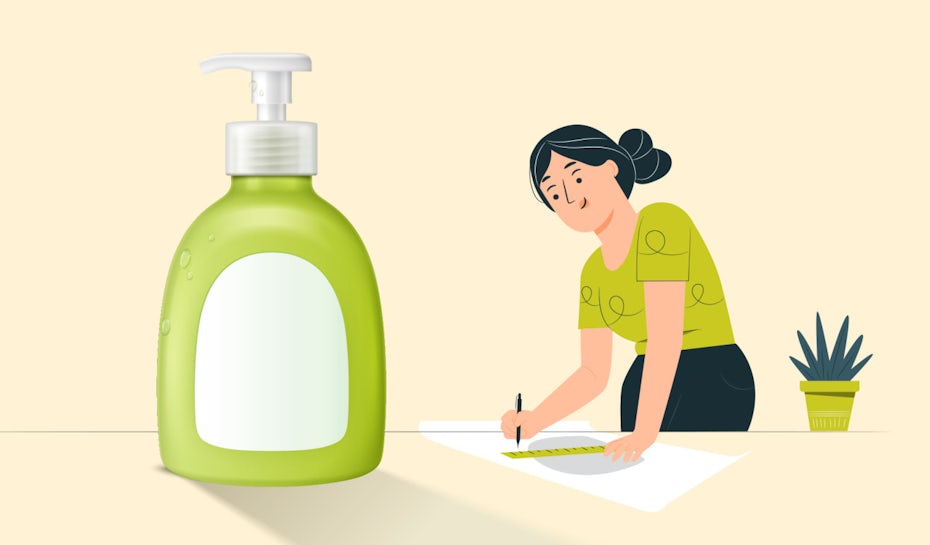
Designing a label can seem like a complicated undertaking at first. Labels must accomplish the task of standing out and evoking the product's unique qualities all while fitting within the company's established brand. There are also technical considerations: what information to include and where, the shape of the container, and the limitations imposed by printing expenses. To simplify all of this, we're going to walk you through every step in this complete guide to label design.
The product label checklist
—
Before you can create or commission a label design, there are a few things that the client will need to have ready for the designer ahead of time. This will make the design process go much smoother, ensuring that you avoid any rushed, last-minute design changes due to a lack of planning.
Packaging dimensions
The container, of course, comes before the label. Begin by researching packaging suppliers or manufacturers (a quick Google search can help you find one in your area), and choose a container. Be sure to take note of the material, size/shape and pricing for bulk orders.
There are common label sizes associated with most standard packaging types, such as a 12oz beer can or a 750ml wine bottle. Usually, as long as you know the packaging dimensions, the designer can creatively determine the appropriate label dimensions that will fit.
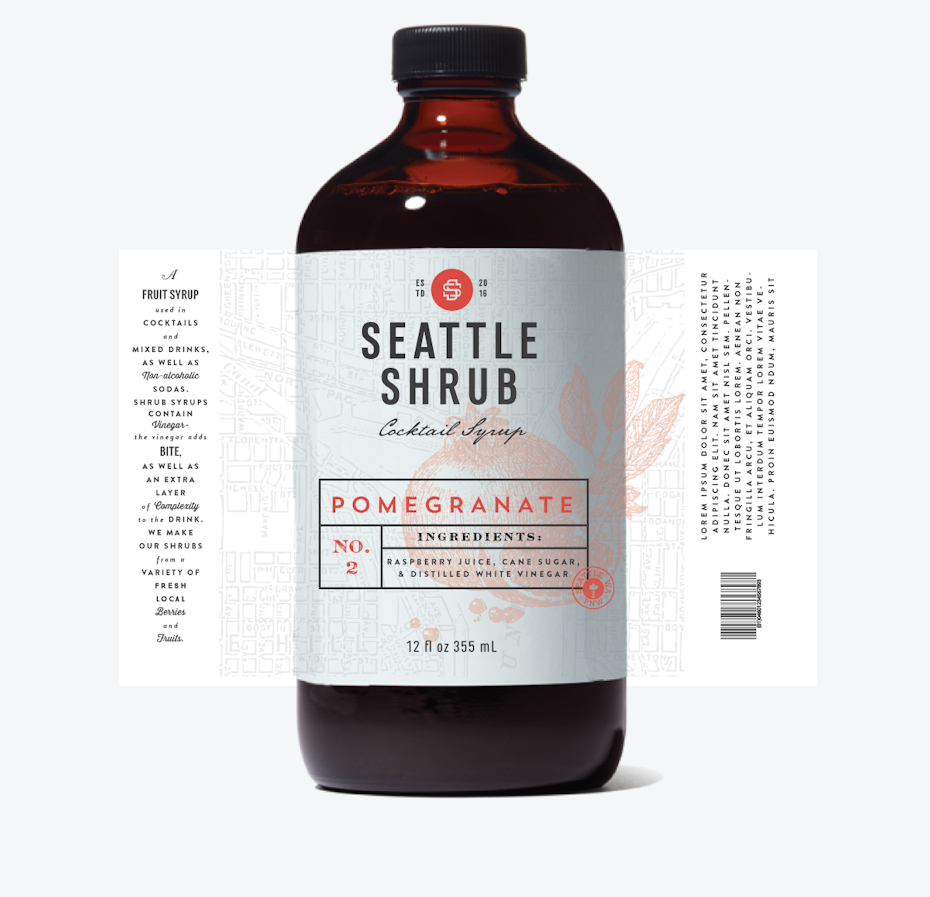
Printing service
The printing service will take the final design file and create your finished label. All the same, it is good foreplanning to find out the printer's technical requirements and pricing before seeing a designer—e.g. file formats, sizing restrictions, costs for additional colors, or fancy extras like foiling, finishes and mattes. Some printing services (like Vistaprint) provide readymade blank label templates based on your dimensions.
Selecting a printer in tandem with your packaging manufacturer will help you make sure the label size and adhesive will work with your packaging shape and material. Some packaging suppliers may double as a printing service or have printers they recommend (or vice versa).
Logo and branding
A label design is no substitute for a logo, and it is a common rookie mistake to commission a label design before giving any thought to your company brand. A logo represents the overall business's identity through a simplified symbol whereas the label acts more or less as a signpost for a particular product.
A label design ultimately fits within the umbrella of brand identity, and for that reason, it is important to have your logo and brand created beforehand. This includes considerations like brand colors and fonts, all of which the label designer will use to keep their work visually consistent with the rest of your identity.

Product description
The description gives practical information about the product—usually in paragraph form—that the consumer can read at their leisure. The details included here will depend on your product. For example, something medicinal like a supplement may include directions, steps and warnings. Alcoholic beverages, on the other hand, will include an ABV percentage along with volumetric measurements. All of this is why it is ideal to have a copywriter draft this up ahead of time so that the designer will know exactly how much space to set aside.
Nutritional facts or ingredients
Nutritional facts will display the ingredients and their quantities in table form, particularly for consumable products. It is most important at this stage to know how many ingredients you are working with as this will dictate how big the table should be.
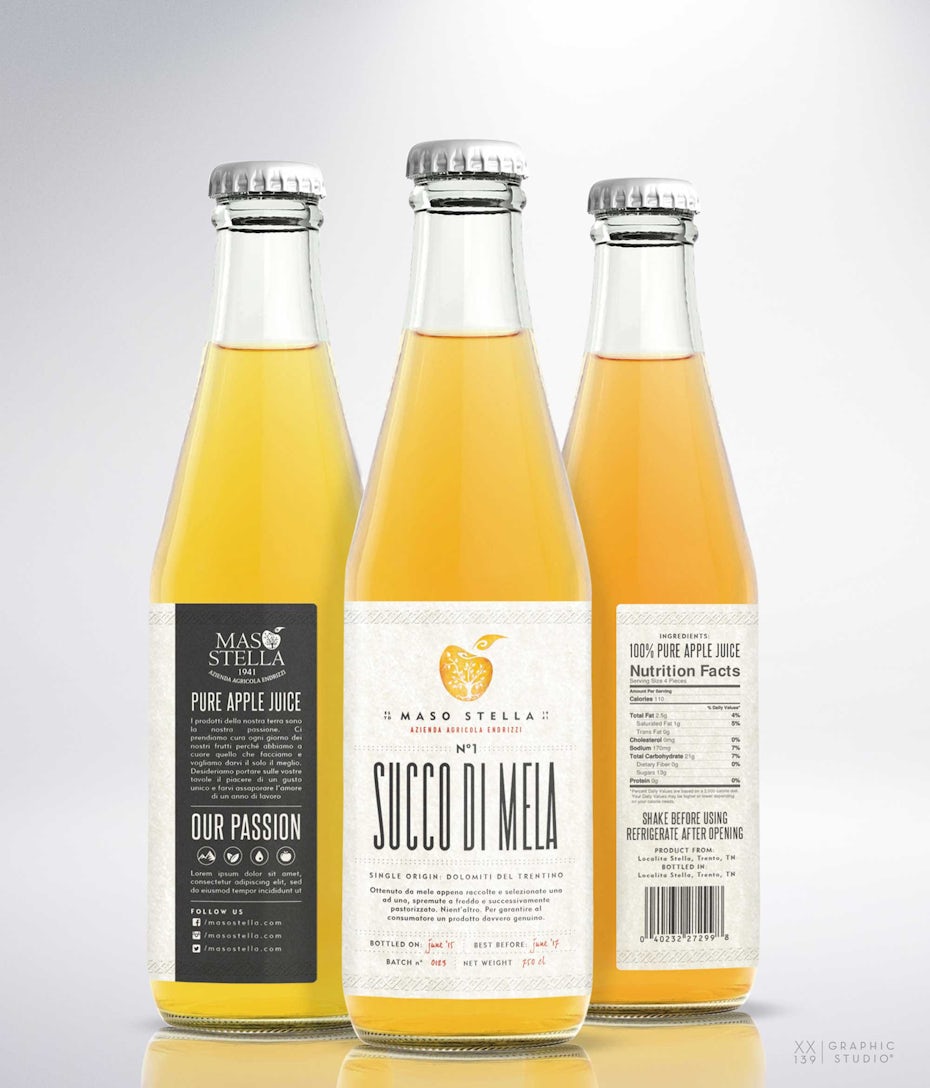
Certifications and other icons
Some product types will need specific icons that communicate shorthand information. For example, these are some common icons used on food and cosmetic packaging. These are typically doled out by government agencies like the FDA or USDA (or your country's equivalent) once your product has been approved for retail. Though individually these do not take up much space, a good number of them could end up crowding other design elements, so make sure these icons are accounted for.
Barcode
Barcodes are administered by the global nonprofit GS1, and you can purchase one through their website. If you decide to purchase a barcode after the label design process, the designer should leave space for it and provide a walkthrough on how to add it to the file later on.
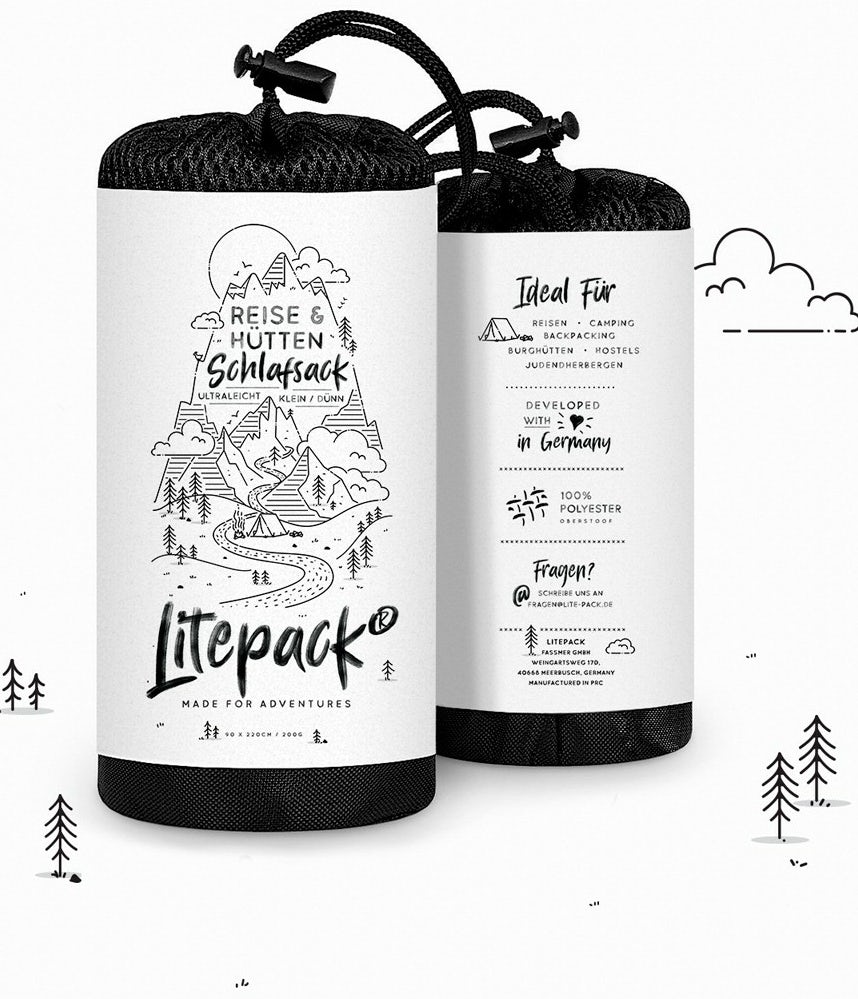
Creative brief
The creative brief is a single document that describes your project and includes your technical requirements and aesthetic preferences. Its purpose is to guide the project throughout the design process. Essentially, this is where you will collect all of the above information and hand it over to a label designer. In addition, a creative brief should include targeted audience and competitor research as well as examples of label designs that fit the style you are going for.
Common types of product labels
—
Labels come in a number of common variations or parts. Accounting for all of these parts before speaking to a designer will help ensure accurate pricing for labor at the start of the project.
Some of these label types will depend on the shape of the container. Even container types that consist of a single wrap-around label (a can, for example) will make use of separate content areas that mimic separate labels. To get a better idea of how this works, we'll go over some common examples.
Front label
When people think of label design, this is typically what they picture. It is the foremost label, meant to identify the product and stand out on a shelf (or on a shopping app) through creative visuals.
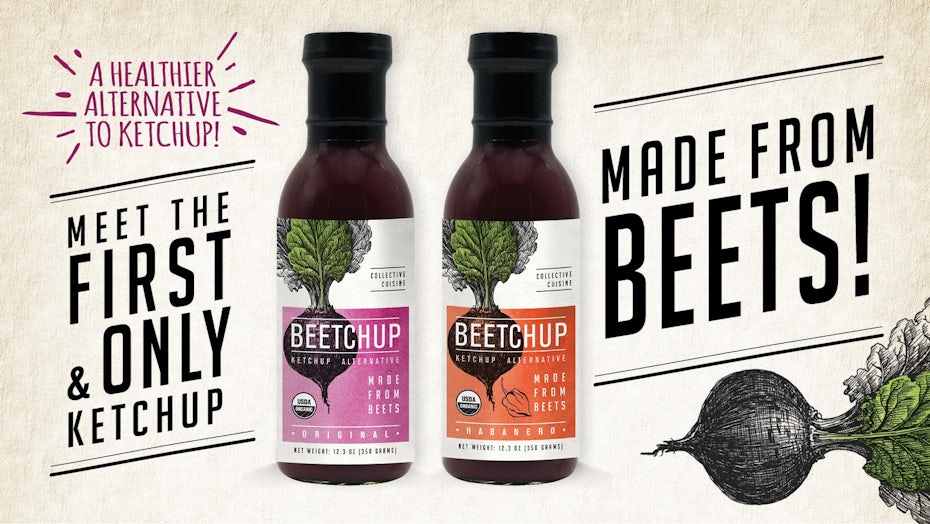
It usually consists of a product name, flavor variety name, logo, tagline, decorative imagery, and supporting information (such as container size, packing date, or location where the product was made). Because this part of the label is meant to generate immediate interest, the amount of writing is generally kept to a minimum and well-designed visuals take precedence.
Back label
The back label contains the extended product description, ingredients, barcode, certification icons, and any other necessary fine print. Some of this content may be displayed on either side of the container in addition to the back (in the case of a wrap-around label, for example).
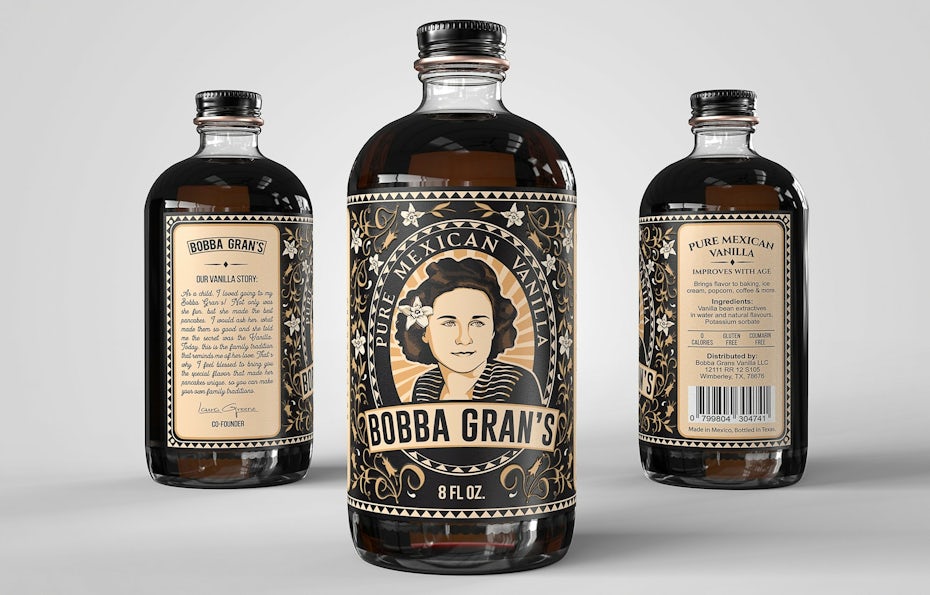
Because the consumer is presumably interested in the product at this point (enough to pick it up and turn it over), the purpose of the back label is to convey straightforward information as clearly as possible. Visually, it should remain consistent with the front label, but the written text will take precedence.
Lid label
A small container such as a short tin may have a label on the top of the lid. This will function essentially the same as the front label. Depending on the size of the container, the lid might provide more space for graphic elements than the front.
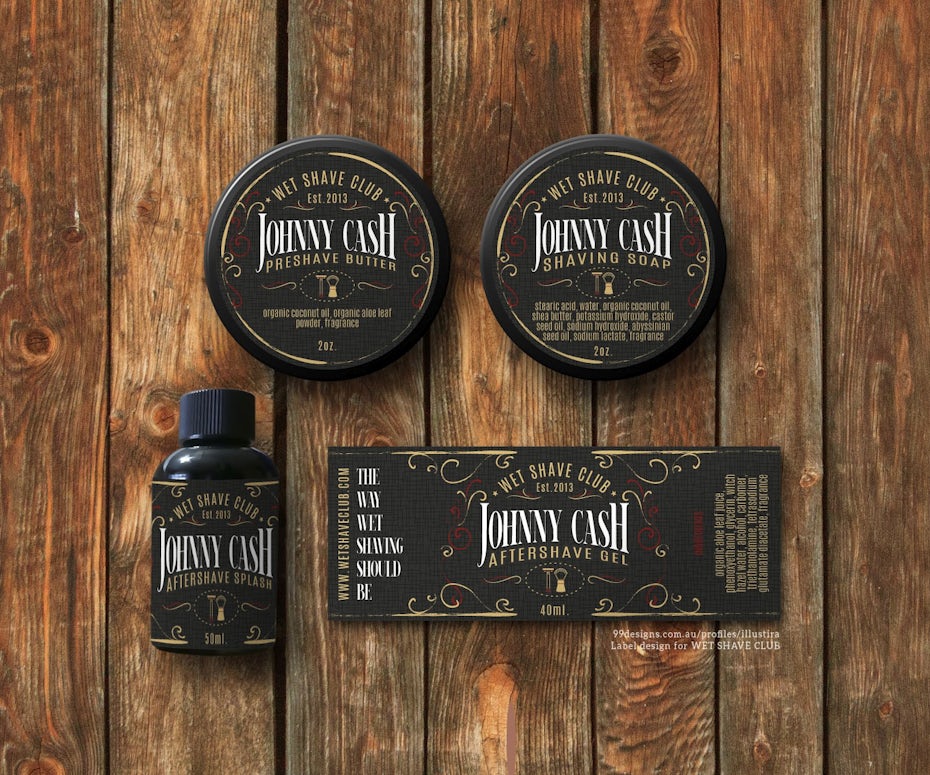
Quality seal
Some jars will include a seal over the lid, the purpose of which is to warn customers not to purchase the product if the seal has been broken. While entirely functional, they can also be a space for branded typography and decorative patterns.
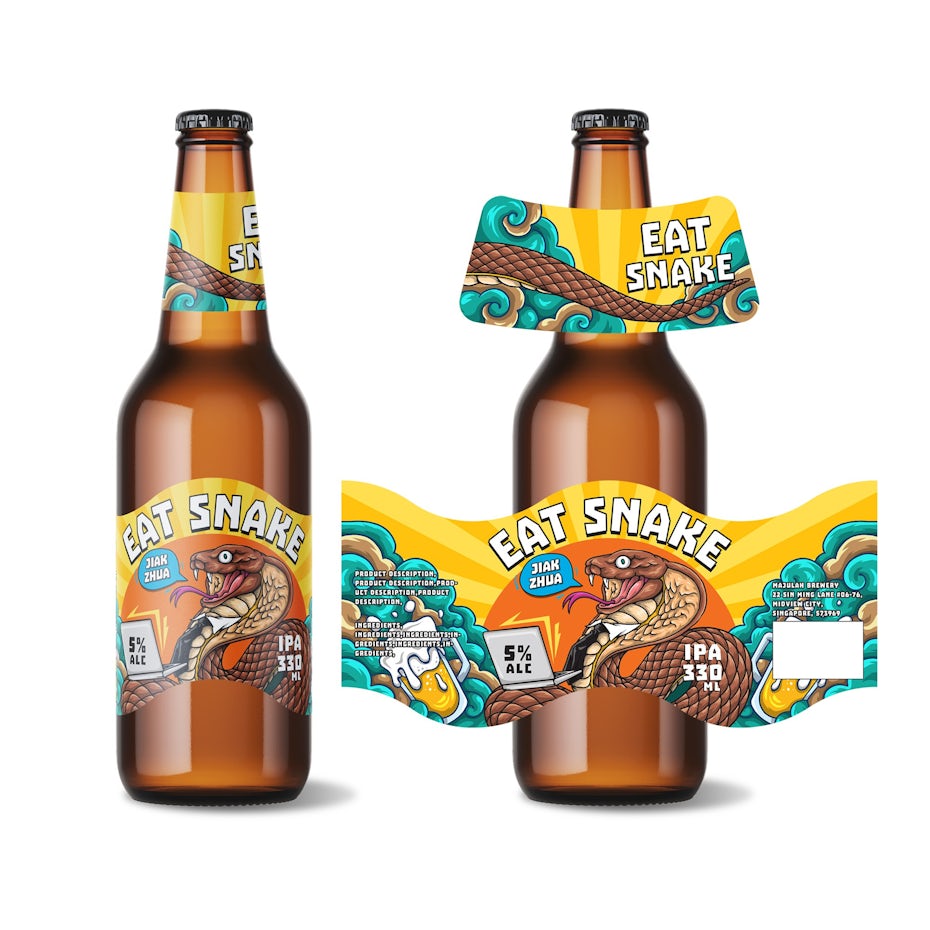
Neck label
A bottle may come with a label on the upper neck. This can be a miniature, minimized version of the front label, where the product logo and graphic elements are reinforced.
The product label design process
—
Decide on a branding direction
As mentioned earlier, labels are meant to create a unique visual identity for a specific product within the larger company brand. This involves strategically using design elements to evoke the logo and overall branding style. Take a look at the various ways the two designers pictured here foster brand consistency through their label designs.
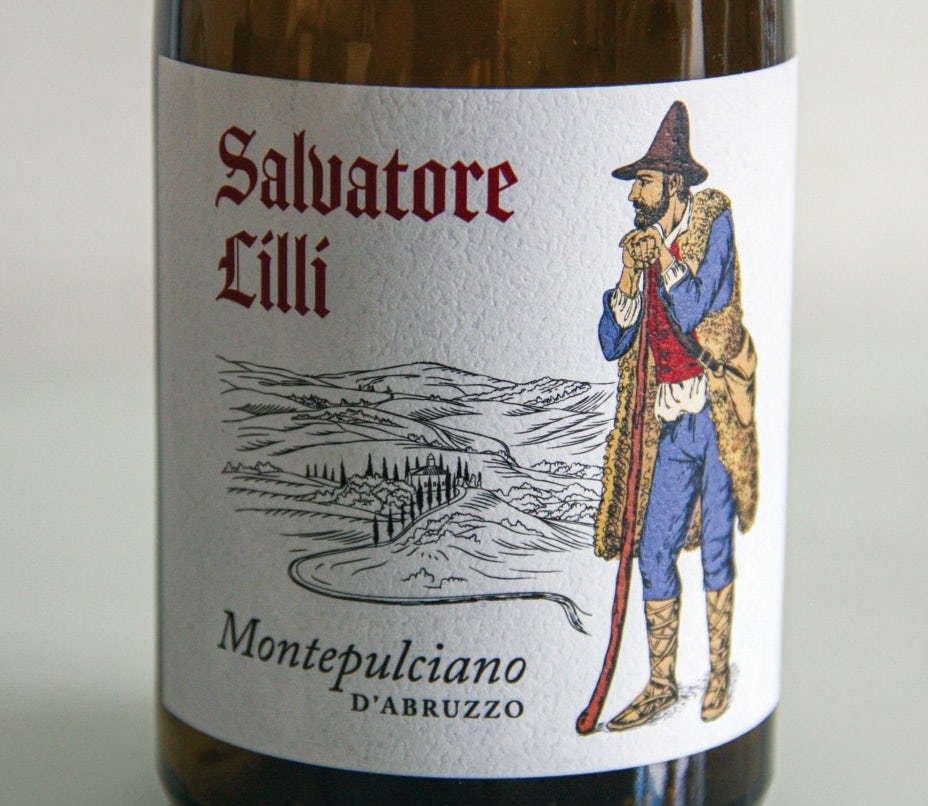
Part of staking out a unique identity for the product means tapping into the specific flavor profile, scent, ingredients, or whatever sets it apart. Color can be one of the more useful tools here. For example, in the labels pictured here, Top Level designer G@rry cleverly incorporates colors that correspond to the flavor into the background illustrations.
In addition, you may need to plan for multiple variations of the same label design if there are other products within the same line (the most common being different flavors). If those other products do not exist yet, it is a good idea to leave the label open for reinterpretation in case more products are added in the future. A common way to do this is to plan for a label that works in different colors or that can substitute imagery of a similar style easily. For example, Top Level designer pswizzard candle labels share the same ornate frames but substitute colors and imagery that correspond to seasonal scents.

Create a label template
In order to carry out your visual direction, you must first set up a basic label template. This is a flat, blank version of the label shape drawn to precise dimensions. There are some resources like Vistaprint that provide readymade templates for basic label sizes.
In order to get a printable file, the label design must eventually be rendered in design software. Which one will depend on what type of imagery is being used, such as whether the design uses photographs or illustrative graphics, but the choice will ultimately come down to whether the software can output the file types the printer requires. In any case, the design file should be set to CMYK color mode since this is standard for printing.
When setting up the label design in software, make sure there is extra padding beyond the specified dimensions of the label. This is referred to as the bleed margin, and its purpose is to make sure no blank edges appear during printing. All in all, be sure to account for:
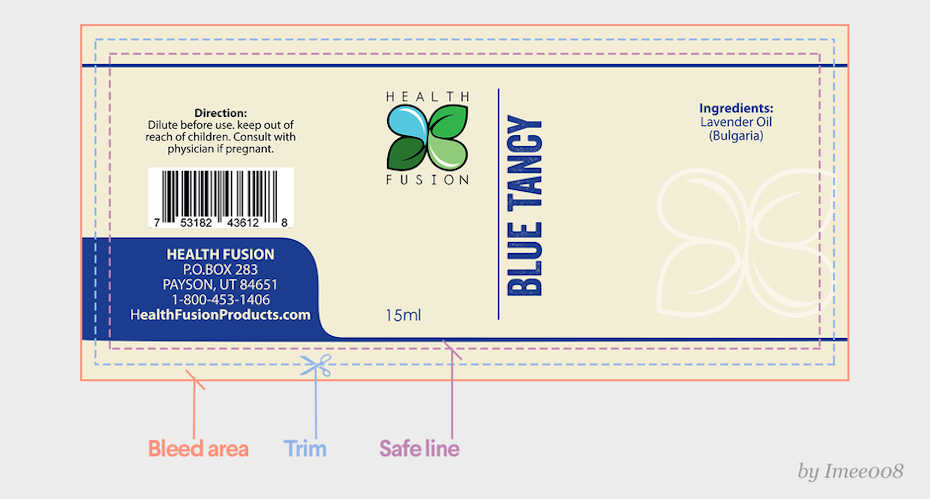
- The safety line: The innermost line that should contain all of the label's foreground imagery and written content.
- The trim line: The middle line which the printer will be aiming to cut across (this matches the edge of the original dimensions)
- The bleed line: The outermost line and extra padding which the label's background colors and graphics should extend to.
The exact size of these margins can vary depending on the printer, but in general US printers recommend 0.125in and EU printers recommend 3mm.
Mock-up your design
A 3D photographic mockup is not only a useful tool for creating a presentational preview of the design or for promotional imagery, but it is also extremely helpful for testing out whether the label design works before the money is spent on printing. A label is designed on a flat surface, but ultimately it will need to read clearly on a physical (often curved) shape, without any distortion in the words or graphics.

The mockup photos themselves are usually third-party stock images (from a service like Yellow Images) that come at a price for the client if they wish to use the images commercially. A designer can also create their own from 3D programs like Blender (this, of course, will require dedicating time to learning an entirely different software, but it does allow designers to own their own stock images). Photographs of real life blank containers also work. Once the designer has the base container image, they will use the transform tools in a design program like Photoshop to fit the label design around the image. For more on this process, refer to our four techniques to create a mockup.
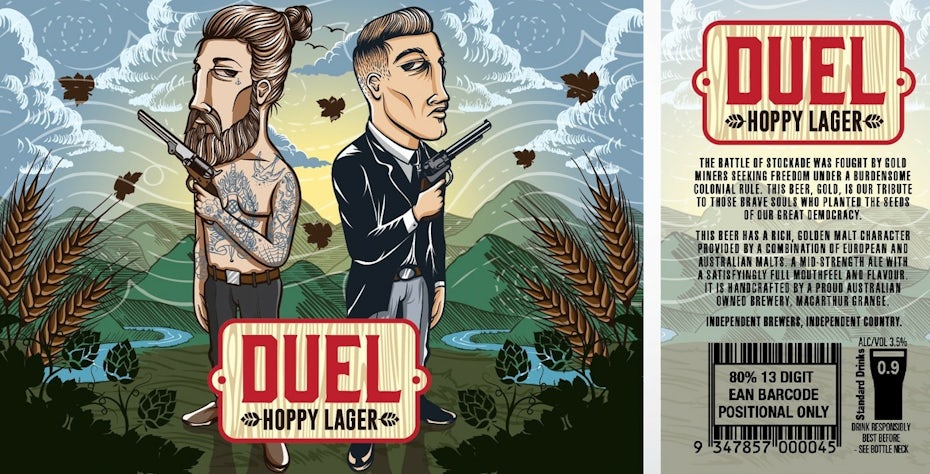
Assuming the label design needs no adjustments, the final file is ready for export. First of all, the client will need an editable source file (such as the PSD, AI, or EPS file). In this source file, each part of the design should be situated on a separate layer and clearly labeled in the Layers panel. A simple preview image, such as a JPG or PNG, should also be provided, and this can contain a mockup or other shareable images for social media.
If you used any third-party fonts or images, the client should have information on where to purchase the licenses. Once the final file has been handed over, the designer and client should keep an open line of communication in case there are any issues with the printer that require quick fixes.
Design a label that truly sticks
—
For all of the creative opportunities a label design presents, there are many potential limiting factors. From the specifications of the printer to the shape of the container, from required information and pre-established branding, there are many details to work through to get any label design—let alone a great one. But that is what makes it even more inspiring when designers are able to rise above these constraints to deliver something that is more than a sticker on a package—a label that is truly special. So when you are ready for your own great label design, make sure you pick the right designer off the shelf.
Want to get the perfect label design for your product?
Work with our talented designers to make it happen.
Graphic Design How to Label Images Etc
Source: https://99designs.com/blog/marketing-advertising/how-to-design-a-label/
0 Response to "Graphic Design How to Label Images Etc"
Post a Comment